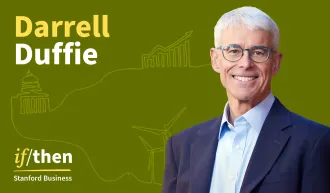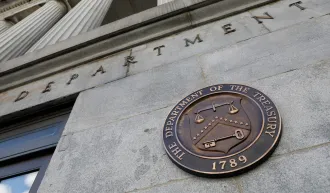Benoît Monin: Moral Stigma Spreads Down From Top Brass
A CEO’s ethical transgressions can harm the careers of subordinates.
March 27, 2015
Moral suspicion trickles down social hierarchies, making a top leader’s ethical transgressions especially damaging for the careers and reputations of colleagues and subordinates, according to new Stanford research.

Former Enron CEO Ken Lay’s wire fraud and conspiracy charges impacted his employees in a phenomenon researchers refer to as moral spillover. | Reuters/Richard Carson
Nearly a decade after the collapse of Enron, as the researchers point out, many of that company’s former employees continue to feel the weight of the scandal, believing that the public views them as corrupt even though they never engaged in the type of unethical behavior practiced by Enron’s top managers that eventually bankrupted the firm in 2001.
“Researchers refer to this phenomenon as moral spillover, in which the immoral actions of one individual lead people to develop negative moral impressions of other associated individuals,” wrote Takuya Sawaoka, a Stanford graduate student in psychology, the lead author on the report, and Benoît Monin, a Stanford professor of organizational behavior and of psychology.
Research Findings
In four different studies involving 672 participants, Sawaoka and Monin found that when people learned about the immoral behaviors of top leaders in a group, they reported greater “moral suspicions” about the other group members lower in the organization’s hierarchy.
In one study, participants were randomly assigned to read vignettes in which an organization member had engaged in unethical business practices. The results showed that a high-ranking member’s deceptive practices were perceived as more prototypical, resulting in more negative moral impressions of the entire organization and everyone in it.
“This more negative moral impression led people to rate ambiguous behavior by another organization member as more suspicious – even when the prior transgression was purely self-serving,” wrote Sawaoka and Monin. This “moral spillover” effect played out across different types of misdeeds, spanning violations in scientific research, medical practice and finance.
Finally, a top leader’s unethical behavior led other organization members to receive more negative job-hiring recommendations, according to the findings. Thus, high-ranking ethical violations affect not only reputations of lower level employees, but career prospects as well.
In an interview, Sawaoka said, “We found that people made significantly more negative hiring recommendations for this employee after they read that a high-ranking executive, rather than an entry-level employee, from this organization had committed fraud – even though there was no indication that the two had ever worked together or even knew each other.”
Enduring Moral Stigma
Sawaoka and Monin’s research suggests that people assume that an organization’s top leaders are seen as embodying the qualities and characteristics of the rest of the organization.
For example, one of the studies used a scenario in which it was stated that the high-ranking leader may or may not have had direct responsibility over all others in the organization – therefore, the rank-and-file employees should be perceived as “innocent.” Yet they were nonetheless deemed “tainted” by association in the minds of the people being tested in the study.
As Sawaoka put it, “Our reputations are all interconnected – which is why it’s in our own best interest to work for ethical management and organizations.”
Sawaoka and Monin acknowledge that this effect may not apply in all aspects of morality. For instance, ethical violations such as workplace bullying or sexual harassment may be perceived as inherently individualistic misdeeds that reflect the perpetrator’s personal flaws, rather than that of a corrupt organizational culture.
The research validates the concerns expressed by employees who believe they have been unfairly tainted by working for scandal-ridden companies and executives, they wrote.
Moreover, Sawaoka said, people’s professional networks are readily available for all to see in the Internet age.
“With the rise of ubiquitous online social networks, rapid news cycles and greater information transparency, details regarding your professional affiliations – organizations and people you’ve worked with, for example – are only a few clicks away. In addition, revelations about co-workers’ ethical lapses spread quickly on the Internet gossip mill,” he said.
Originally published on Stanford University News.
For media inquiries, visit the Newsroom.
Explore More

Jensen Huang on How to Use First-Principles Thinking to Drive Decisions

Why Investors Throw Money at Eccentric CEOs



